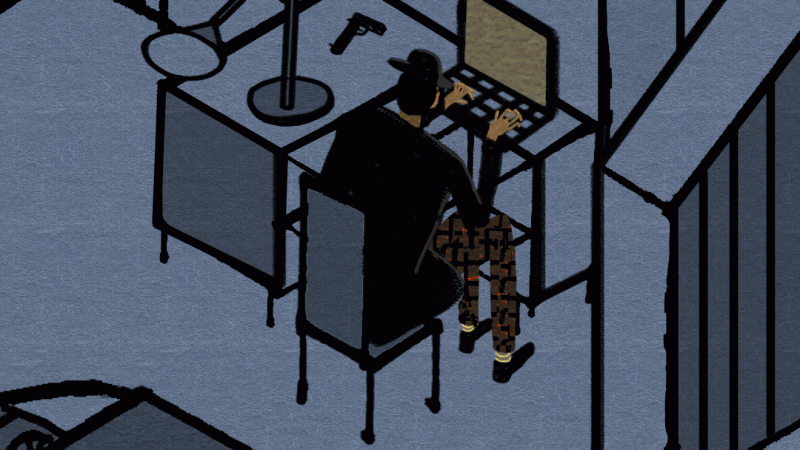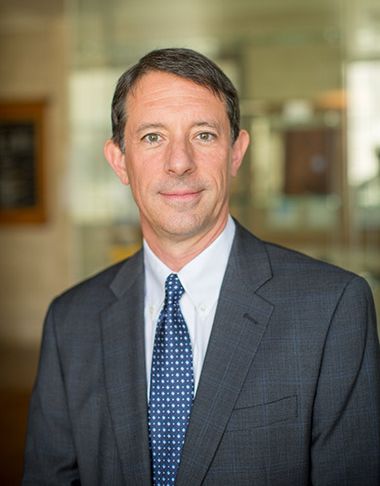Beds. Dressers. Clothing.
All items that raised the suspicions of a state health inspector that “business as usual” at the Orchids of Asia Day Spa in Jupiter, Fla., was anything but.
The observation that employees might be living in the spa—a red flag for human trafficking—helped launch a large-scale criminal investigation into the massage parlor and others like it across the state.
Although prosecutors ultimately did not file human trafficking charges, the media attention surrounding this high-profile case cast the issue of modern-day slavery into the spotlight. At the same time, it called attention to the challenges of using a low-tech, see-something-say-something approach to identify these types of abuses.
It’s a reality apparent to Dan Lopresti, a professor of computer science and engineering, who says the time is ripe to move beyond our reliance on good—but fortuitous—observations to uncover crimes of human trafficking.
With the United Nations calling upon states, through Target 8.7 of its Sustainable Development Goals, to end forced labor, modern slavery and human trafficking by 2030 (and the worst forms of child labor by 2025), it’s time, he says, to leverage technology to support trained law enforcement in tackling this complex issue.
Lopresti, who directs Lehigh’s interdisciplinary Data X Initiative, is at the forefront of a growing movement within the computer science community to help achieve that ambitious goal through the power of artificial intelligence and advanced computing.

What is Human Trafficking?
The U.S. Department of Homeland Security defines human trafficking as modern-day slavery that “involves the use of force, fraud, or coercion to obtain some type of labor or commercial sex act.” Victims are vulnerable people lured by traffickers’ promises of opportunity—jobs, education, visas—who are manipulated by, and often dependent upon, their captors, preventing them from reporting the abuse.
“There are tremendous barriers placed in front of victims, who also have tremendous vulnerabilities,” says Jennifer Gentile Long ’93, chief executive officer of AEquitas, a resource for prosecutors working on cases of human trafficking and gender-based violence. “That makes their participation in these investigations very difficult and in some cases impossible—sometimes because of direct threats and sometimes just because the trauma is so great or they lack trust or familiarity with our justice system. We also often see victims identified as defendants and that shuts everything down.”
Since 2015, Long and Lopresti have collaborated on computer-science-based efforts to help AEquitas manage and make use of the large amount of text data in legal documents to support the organization’s work in helping prosecutors build stronger cases.
“Human trafficking is a very hard crime to prove because you have to pull together a lot of pieces of information,” Lopresti says. “It’s often misidentified as a single, isolated crime, like prostitution or a drug offense. And unless you put together the pieces, you don’t realize there is a much bigger picture.”
Combating Crime with Technology and Policy
Although traffickers have embraced the internet and social media platforms to recruit potential victims and advertise to customers, Lopresti says, the same networks provide opportunities for rooting out criminal activity.
“Imagine the techniques that Google and Facebook are using to make tons of money—understanding people the way they connect, what their interests are, what they might buy or the activities they engage in,” he says. “We can apply those same techniques—data mining, text mining, what’s called graph mining—AI that’s being used for legitimate and really profitable purposes, to track these illicit behaviors.”
As a member of the Executive Committee of the Computing Research Association’s Computing Community Consortium (CCC), Lopresti helped organize a two-day conference at the United Nations in February. “Code 8.7: Using Computational Science and AI to End Modern Slavery” brought together about 150 top researchers, policy makers, social scientists and representatives of the tech community—as well as victims of exploitation—for a deep dive into the topic.
“Finding a solution to the problem of human trafficking is not just a technical one. It also involves social and political policy,” he says. “As a researcher, if you don’t understand this, you could come up with a solution that you think is elegant mathematically but is totally irrelevant in the real world. So that’s why we wanted to be in the same room with the social scientists and the policy makers.
“It goes the other way too,” Lopresti continues. “There’s a lot written about AI now—it’s everywhere, and some people think it’s a panacea for everything. You can just put some data in and turn the crank and you’ll solve your problem. But it’s a lot more complicated than that.”
Ideas shared at the event applied technology to the problem from every angle: For example, the University of Nottingham Rights Lab presented their work in analyzing satellite images with computer vision techniques to detect evidence of forced labor in India and Thailand.
Taking another approach, NGO AnnieCannons is “transforming survivors of human trafficking into software professionals,” by teaching them in-demand coding skills as a way to provide economic opportunities and stop the cycle of exploitation.
The conference, which was co-hosted with the United Nations University Centre for Policy Research, the Alan Turing Institute, Tech Against Trafficking, the University of Nottingham Rights Lab and the Arizona State University Global Security Initiative, was the kickoff to what organizers plan to be a multiyear collaboration around the issue.
“It was amazing to see experts in all these fields come together and try to coordinate efforts so that people are working toward solutions, not working haphazardly,” says Long. “They are making a true impact on this crime—identifying victims at points where they are missed, providing opportunities to leave and find safety, identifying perpetrators and looking at policy in a coordinated effort. And it’s so great to see Lehigh, in a way, sitting at the head of the table.”
During the conference’s closing session, survivors of human trafficking shared their stories with attendees.
“It reminded everyone,” says Lopresti, “that even though we are talking about information, data and policy, which all seem abstract, the data is real people. You can’t treat a problem like
this abstractly.”
Digging Out the Hidden Evidence in Data
Lopresti’s participation in the global discussion of the issues surrounding modern slavery follows his work outside the university on a local level. He connected with the Regional Intelligence and Investigation Center (RIIC) in neighboring Allentown, Pa., through his work with Long.
The RIIC, launched in 2013, has “revolutionized” the way area police departments “analyze and share collected data to solve crimes,” according to the office of Lehigh County District Attorney James Martin.
“I had no idea in our own backyard this [human trafficking] was happening,” Lopresti says. “But the same reason that drives Amazon to build a big warehouse here—the accessibility to large populations—is the reason why the Lehigh Valley is also a hub for human trafficking, drug trafficking, gangs and some very serious criminal activity.”
Lopresti, who is an expert in document analysis and pattern recognition, is continuing his work with RIIC Director Julia Kocis, prosecutors, law enforcement officials and other Rossin College computer science and engineering faculty members—Jeff Heflin, Sihong Xie and Eric Baumer—to help overcome the challenges of turning vast amounts of data, primarily from police incident reports, into something usable, despite limited resources.
“If an expert sits down and reads enough of these, he or she will find a common thread—this person is related to this place, which is related to this activity, which is related to this other person,” he says. “The trouble is, they’ve got millions of these reports and just don’t have enough time to read through them. We’re developing natural language techniques, text mining and data mining techniques that are oriented to processing lots of data to identify patterns of behavior that would reflect illegal activities related to human trafficking.”
Kocis presented the RIIC’s work at Code 8.7, emphasizing the “wealth of information and evidence hiding within freeform text and unstructured data that AI techniques can help identify.” According to the Lehigh County DA’s office, “Efficient access to this information will place law enforcement in a better position to help victims, investigate and prosecute traffickers and deter buyers.”
“Technology alone can’t solve the problem,” adds Long, “but when we combine it with training efforts to develop highly skilled, trauma-informed investigators and prosecutors, we can enhance victim identification and safety.”
Using Artificial Intelligence for the Greater Good
Lopresti is also tackling the issue and raising awareness in the next generation of problem solvers through a class he’s teaching at Lehigh called AI for Social Good.
Students in the class have experience with writing code, a skill he knows can make them financially successful—but also gives them a powerful tool for making a difference.
“We’re looking at a range of problems, including human trafficking, where no one’s going to dump a ton of money on you because of this,” he says, “but it’s important to society that we are able to solve the problem.”
For example, a number of students are investigating ways to use Google Street View data and computer vision algorithms to evaluate the condition of Allentown’s housing stock. The technology could identify homes in violation of code or in need of repair, and possibly help identify irresponsible landlords that hurt neighborhoods.
“Our students tend to be very practical, and obviously I hope they’re successful when they go out into the world,” says Lopresti. “But at the same time, I want them to realize that it’s not just about the money. It’s about having a positive impact on society.”
This story originally appeared in the Summer 2019 Bulletin.
—Katie Kackenmeister is assistant director of communications for the P.C. Rossin College of Engineering and Applied Science.

